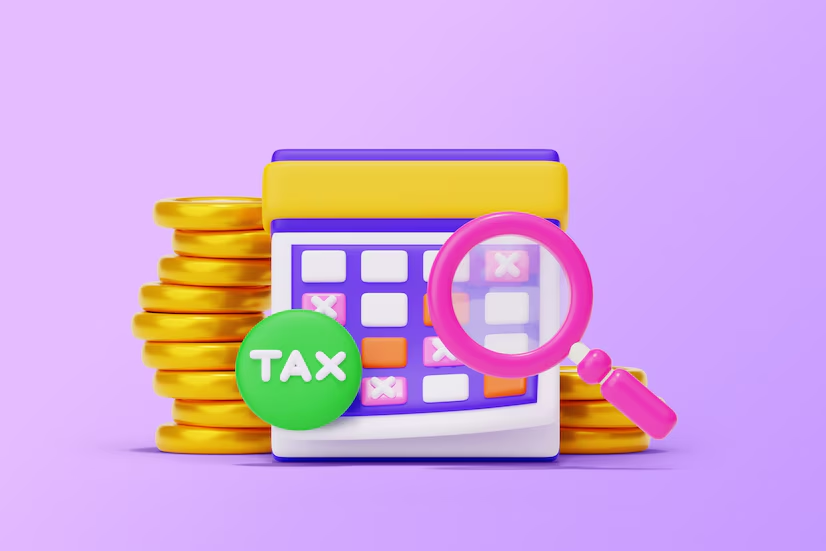Key Takeaway
- The Reverse Charge Mechanism shifts GST liability from sellers to buyers, aiming to enhance tax compliance and revenue from the informal sector.
- RCM impacts a wide array of transactions, necessitating adjustments in accounting for both goods and services.
- It is triggered under specific conditions, including transactions between unregistered suppliers and registered buyers, and applies to specified goods and services.
- Successful RCM implementation requires significant adjustments to accounting systems for accurate tax liability tracking and input tax credit claims.
- Ensuring compliance and maintaining proper documentation are essential to avoid penalties and maximize tax benefits under RCM.
In the field of accounting and taxation, the Reverse Charge Mechanism (RCM) represents a major shift from traditional tax practices, introducing a nuanced approach to tax liability and compliance. This mechanism, primarily associated with the Goods and Services Tax (GST) framework, reallocates the responsibility of tax payment from the seller to the buyer, a move designed to enhance tax compliance and streamline the collection process, especially in transactions involving unregistered person (supplier) and registered person (buyer).
The implementation of RCM impacts a wide range of business transactions, covering both goods and services, and requires a thorough understanding and careful adjustment of accounting practices. The essence of RCM is not just in altering who pays the tax, but also in its implications for accounting entries, tax documentation, and compliance reporting.
This approach requires careful attention to how transactions are recorded, how tax liabilities are calculated, and how input tax credits are claimed. For businesses, this means revisiting their accounting systems, configuring settings to accommodate RCM transactions, and staying vigilant on compliance requirements to effectively leverage the mechanism.
What is Reverse Charge Mechanism?
The Reverse Charge Mechanism (RCM) is a pivotal concept within the framework of the Goods and Services Tax (GST) that alters the conventional tax payment process. Traditionally, the supplier of goods or services is responsible for collecting and remitting GST to the government. However, under RCM, this responsibility shifts from the supplier to the recipient of the goods or services. This means that the buyer, instead of the seller, is liable to pay the GST directly to the government.
The primary objective of introducing RCM is to increase tax compliance and capture tax revenue from the informal sector or from transactions where the supplier is not registered under GST. This mechanism ensures that the government secures its revenue at the point of consumption or use, rather than at the point of sale. It is particularly significant in transactions involving unregistered dealer and registered person (buyers), as it closes a loophole that could otherwise lead to tax evasion.
RCM applies to specific goods and services as defined by the GST law, which includes both specified categories and transactions under certain thresholds. The mechanism is designed to bring more businesses into the tax net, ensuring that all taxable supplies, irrespective of the supplier’s GST registration status, contribute to the government’s revenue. It also levels the playing field for registered suppliers, who might otherwise be at a competitive disadvantage compared to unregistered person not charging GST.
Implementing RCM requires businesses to adjust their accounting and reporting practices. They must now account for the GST on purchases as both an expense (tax payable) and an asset (input tax credit), provided they are eligible to claim such credit. This dual entry ensures that while the tax liability is recognized, the business can also reclaim the amount as a credit against its own GST liabilities, subject to meeting the conditions laid out in the GST legislation.
In essence, the Reverse Charge Mechanism is a strategic tool within the GST framework, aimed at enhancing tax compliance, broadening the tax base, and ensuring that the government efficiently collects tax revenues on all taxable supplies, thereby minimizing the tax gap and promoting a more equitable tax system.
Criteria for Reverse Charge Applicability

The Reverse Charge Mechanism (RCM) under the Goods and Services Tax (GST) framework is not universally applied but is triggered under specific conditions. Understanding these criteria is crucial for business entity to ensure compliance and to accurately manage their tax liabilities and input tax credits. The applicability of RCM is determined by several key factors:
1. Nature of the Supplier and Recipient
- Unregistered Person to Registered Person: One of the primary triggers for RCM is when a supplier, who is not registered under GST, provides goods or services to a registered person. This criterion aims to capture tax revenue from transactions that would otherwise escape the GST net due to the supplier’s non-registration.
2. Specified Goods and Services
- Government Notifications: The GST law and subsequent notifications by the government specify certain goods and services for which RCM is applicable, regardless of the registration status of the supplier. These lists are periodically updated and include high-risk categories where tax evasion is perceived to be more likely.
3. Import of Services
- Any Import: RCM is applicable to the import of services by any entity, whether registered or not under GST. This ensures that services consumed within the country contribute to tax revenue, irrespective of the location of the supplier.
4. Import of Goods
- Specific Imports: Certain imports of goods are also subject to RCM, aiming to equalize the tax treatment of domestic and imported goods and ensuring that imported goods do not enjoy an undue tax advantage.
5. Threshold Limits
- Exceeding Exemption Thresholds: For certain transactions, RCM applies when the value exceeds specified threshold limits. These thresholds are set to exempt small-scale transactions from the complexity of RCM compliance.
6. Intermediary Services
- Services through an Intermediary: Transactions involving intermediary services, where the intermediary is located in one country, the supplier in another, and the recipient in yet another, often trigger RCM to ensure that the service is taxed where it is consumed.
7. Reverse Charge on Behalf of Others
- Agent-Principal Transactions: In scenarios where an agent procures goods or services on behalf of a principal, RCM may apply, making the principal liable for GST payment under RCM, to prevent tax leakage in agent-principal relationships.
Setting Up RCM for Goods and Services
Implementing the Reverse Charge Mechanism (RCM) within your accounting system requires a structured approach to accurately track and report transactions. This setup is crucial for both compliance and financial reporting. Here’s how businesses can configure their systems for goods and services under RCM:
Configuring Inventory Items
- Identification: Start by identifying which goods in your inventory are subject to RCM based on the latest GST notifications. This list may include both raw materials and finished goods.
- Accounting Software Setup: Within your accounting software, create a separate category or flag for inventory items subject to RCM. This distinction allows for automated tax calculations during the purchase process.
- Tax Rate Adjustments: Ensure that the correct GST rates are applied to these items. Since the tax is not paid to the supplier but directly to the government, the system should recognize this and adjust the tax payable accounts accordingly.
- Input Tax Credit (ITC): Configure your system to recognize the input tax credit eligible under RCM purchases. This ensures that while the tax is paid upfront, it is also claimed back as an ITC, affecting the correct ledgers.
Setting Up Service Accounts
- Service Identification: Similar to goods, identify the services your business procures that fall under RCM. This could range from professional services to imports.
- Service Ledger Configuration: Create dedicated service ledger accounts for these services, ensuring they are marked for RCM. This helps in segregating RCM services from regular transactions for accurate reporting.
- Automate Tax Liability Entries: Configure the accounting software to automatically post tax liabilities to the government and credit the input tax credit simultaneously, streamlining the process.
Documenting Inward Supplies Subject to Reverse Charge
Proper documentation and recording of inward supplies under the Reverse Charge Mechanism (RCM) are critical for maintaining accurate financial records, ensuring tax compliance, and facilitating the timely reclaim of input tax credits (ITC). Here’s a detailed approach to managing these processes:

Record Inward Supply of Goods Under Reverse Charge
- Invoice Verification: Upon receipt of an invoice for goods subject to RCM, verify that it includes all necessary details such as supplier name, date of transaction, description of goods, quantity, and the value of goods. Ensure it specifies that the supply is under reverse charge.
- Accounting Entry Creation: Create an accounting entry in your system for the purchase. This entry should not include GST paid to the supplier since, under RCM, the buyer is responsible for paying the GST directly to the central government.
- Tax Liability Entry: Simultaneously, record a liability for the GST amount due under reverse charge. This entry increases the GST payable account in your ledger, reflecting the tax that needs to be paid directly to the tax authorities.
- Input Tax Credit (ITC) Recording: Alongside the tax liability entry, record the corresponding input tax credit. This ensures that while the tax amount is recognized as a liability, it is also captured as an asset that can be used to offset future GST liabilities, subject to eligibility and conditions specified by the GST law.
- Reconciliation: Regularly reconcile recorded purchases under RCM with your GST returns to ensure accuracy and completeness of the tax liabilities and input tax credits claimed.
Record Inward Supply of Services Under Reverse Charge
- Service Invoice Review: For services received under RCM, carefully review the invoice to ensure it contains comprehensive details including the provider’s information, service date, description of services, and the total value subject to reverse charge.
- Service Purchase Entry: Enter the transaction in your accounting system, noting that the cost of the service includes GST liability to be paid under RCM. As with goods, this entry does not involve payment of GST to the service provider.
- GST Liability and ITC Entries: Create a liability entry for the GST due on the services received under RCM. This increases the GST payable on your books. Concurrently, record an input tax credit for the same amount, reflecting the GST that can be reclaimed against your output tax liability.
- Compliance and Reporting: Ensure that all services received under RCM are accurately documented and reported in your periodic GST filings. This includes detailing the GST paid under reverse charge and claiming the eligible input tax credits.
- Audit Trail: Maintain a clear and detailed audit trail of all transactions under RCM, including tax invoices, accounting entries, and reconciliations. This documentation is crucial for tax audits and reviews to substantiate the tax liabilities and credits associated with RCM transactions.
Generating Tax Obligations and Securing Input Tax Credits

Under the Reverse Charge Mechanism (RCM), businesses face unique challenges and opportunities in managing their tax obligations and securing input tax credits (ITC). Here’s how to navigate these processes effectively:
1. Calculating Tax Obligations
- Determine the GST Payable: For each purchase under RCM, calculate the GST payable directly to the tax authorities. This involves applying the appropriate tax rate (normal rate) to the taxable value of the inward supply.
- Record the Liability: Create an accounting entry to record the GST liability on purchases made under RCM. This increases the GST payable account in your ledger.
2. Claiming Input Tax Credits
- Eligibility Check: Ensure that the goods or services purchased under RCM are eligible for ITC. The GST law specifies conditions under which ITC can be claimed, such as the intended use of the goods or services in the course or furtherance of business.
- ITC Recording: Simultaneously with recording the tax liability, record the input tax credit in your accounting system. This entry should match the amount of GST paid under RCM, reflecting it as an asset.
- Utilization of ITC: Utilize the recorded ITC against your output tax liability in subsequent tax periods, in accordance with GST regulations. This helps in reducing the cash flow impact of GST payments under RCM.
Handling Returns of Purchases under Reverse Charge
The return of goods or services purchased under RCM requires careful adjustments to both tax obligations and input tax credits.
Issuing Debit Notes for Returned Purchases
- Issue a Debit Note: For any returns of goods or services initially subject to RCM, issue a debit note to the supplier. This document serves as a formal request for the adjustment of the original transaction value and the associated tax liability.
- Record the Debit Note: Enter the debit note in your accounting system, reducing the value of purchases and the corresponding GST liability recorded under RCM.
Adjusting Tax Obligations for Returned Purchases
- Adjust the GST Liability: Following the issuance of a debit note, adjust your GST liability downwards to reflect the return. This decreases the GST payable account for the amount of tax initially recorded under RCM for the returned goods or services.
- Reclaim of ITC: If the ITC was already claimed on the returned purchase, adjust the input tax credit accordingly. This involves reducing the ITC claimed in your ledger, aligning with the reduced tax liability after the return.
Services Subject to GST on a Reverse Charge Basis
Under the GST framework, certain services are designated to fall under the Reverse Charge Mechanism (RCM), where the recipient of the service is liable to pay GST directly to the central government instead of the service provider. This shift in tax liability aims to enhance tax compliance and ensure tax collection from sectors where evasion risks are perceived to be higher. Some of the services commonly subject to RCM include:
| Service Type | Description | Recipient of Service |
|---|---|---|
| Legal Services | Provided by an advocate or firm of advocates | Business Entity |
| Goods Transport Agency (GTA) Services | For the transportation of goods by road | Registered Person |
| Arbitral Tribunal Services | Provided by an Arbitral Tribunal | Business Entity |
| Sponsorship Services | Provided to a body corporate or partnership firm | Body Corporate/Partnership Firm |
| Government Services | Provided by the Central Government, State Government, Union territory, or local authority (excluding renting of premises) | Business Entity |
| Director’s Services | Supplied by a director of a company or a body corporate | The Company/Body Corporate |
| Insurance Agent Services | Provided to any person carrying on insurance business | Person carrying on insurance business |
| Recovery Agent Services | Provided to a banking company or a financial institution or a non-banking financial company | Banking/Financial Institution/NBFC |
| Motor Vehicle Renting Services | Supplied by way of renting of a motor vehicle to a body corporate by any supplier who is not in the similar line of business | Body Corporate |
| Import of Services | By any person, from a supplier located in a non-taxable territory | Any taxable Person |
Goods Eligible for Reverse Charge Consideration

Similar to services, the GST law specifies certain goods whose supply triggers the applicability of RCM, making the recipient responsible for the payment of GST. The list of goods under RCM is periodically updated by the central government, reflecting policy changes and tax compliance strategies. Some examples of goods that have been subject to RCM include:
- Cashew Nuts, not shelled or peeled.
- Tobacco Leaves subject to certain conditions.
- Silk Yarn supplied by an agriculturist.
- Raw Cotton supplied by an agriculturist to a registered person.
- Supply of Lottery by any person, including the government, to a distributor or a selling agent.
- Used Vehicles, seized and confiscated goods, old and used goods, waste and scrap supplied by the Central Government, State Government, Union territory, or local authority to any registered person.
It’s important for businesses or registered person to regularly review the list of services and goods subject to RCM as provided by the GST council and government notifications. This ensures compliance with tax laws and aids in accurate tax planning and reporting. The applicability of RCM necessitates careful documentation, tax calculation, and reporting by the recipients of such goods and services to avoid penalties and ensure proper tax credit utilization.
FAQs
What is the journal entry for reverse charge mechanism?
The journal entry for a reverse charge mechanism (RCM) transaction involves debiting the expense account or asset account for the purchase and the input tax credit (ITC) account, and crediting the accounts payable (for the net amount of purchase) and output tax liability account for the GST amount. This reflects the cost of the purchase and records the tax liability and input tax credit simultaneously.
How do I record an RCM entry?
To record an RCM entry, you should:
1. Debit the expense or asset account with the cost of goods or services received.
2. Debit the input tax credit account with the amount of GST payable under RCM.
3. Credit the accounts payable with the net amount of the purchase.
4. Credit the output tax liability account with the GST amount due under RCM.
How do you account for reverse charge mechanism?
Accounting for the reverse charge mechanism involves recognizing both the tax liability to the government for the GST on purchases and the corresponding input tax credit. This is done by making journal entries that increase both the expense for the purchase and the input tax credit, while also increasing the GST payable liability.
How do you record reverse charge?
To record reverse charge, make a journal entry that:
1. Debits the expense or asset account for the value of the service or goods received.
2. Debits the input VAT or GST account for the tax amount.
3. Credits the supplier account for the net amount excluding tax.
4. Credits the output VAT or GST liability account for the tax amount due under reverse charge.
What happens if RCM is not paid?
If RCM is not paid, the business entity faces potential penalties and interest for the late payment of tax due under the reverse charge mechanism. Additionally, the input tax credit associated with the RCM transaction cannot be claimed until the tax is paid, affecting cash flows and potentially leading to compliance issues with tax authorities.
What is the 750 limit for RCM?
The “750 limit for RCM” likely refers to a specific threshold set by a tax authority for the applicability of RCM on certain transactions, such as transportation services. For example, if transportation charges for goods transported by road exceed a certain limit (like 750 units of currency), RCM may apply. Note: This is a generic explanation; actual limits can vary by jurisdiction and should be verified with current tax regulations.
Is TDS applicable on RCM?
Yes, TDS (Tax Deducted at Source) can be applicable on payments made under RCM, depending on the jurisdiction’s tax laws. However, TDS and RCM operate independently; while RCM pertains to the payment of GST by the recipient, TDS involves deduction of tax at the source of income. It’s important to comply with both sets of regulations as applicable.
Is RCM shown in GSTR 2A?
Yes, transactions under reverse charge mechanism (RCM) are shown in GSTR-2A. GSTR-2A is a dynamic tax return form that reflects purchases and inward supplies, including those under RCM. This allows the registered person to verify and reconcile their tax liabilities and input tax credits for purchases made under RCM.








